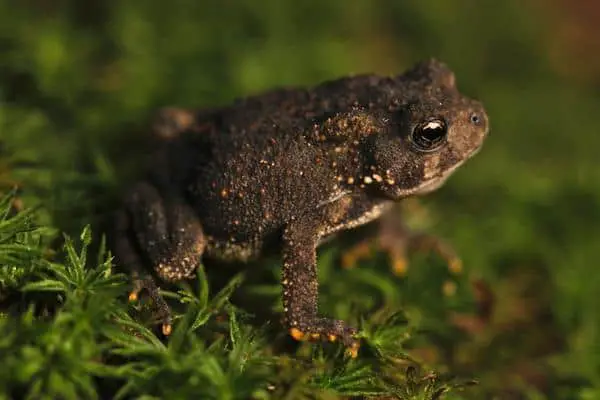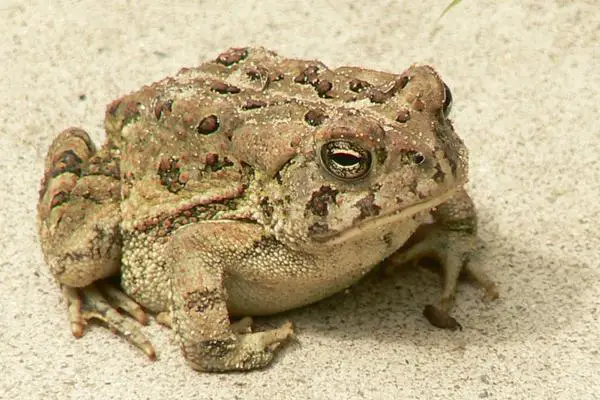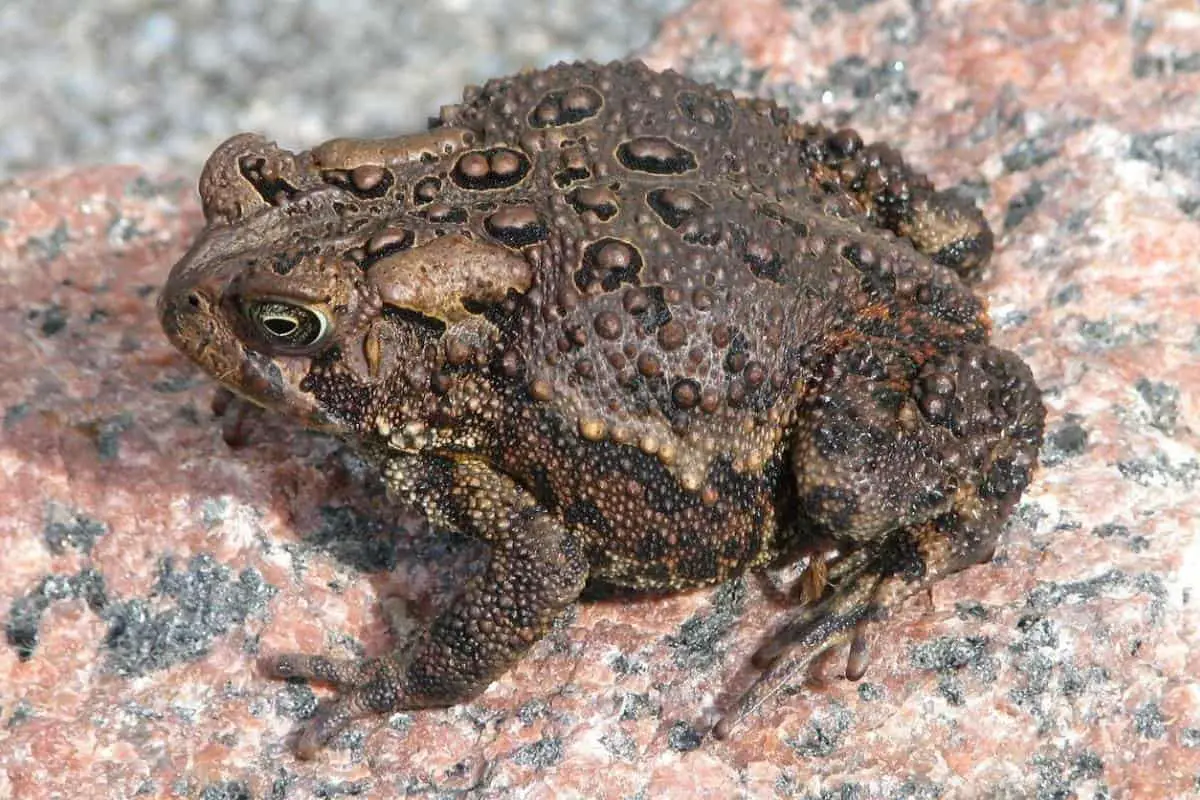The state of Pennsylvania has a diverse geographical landscape. This includes the 57 miles of sandy shores along the Delaware River, the Appalachian mountains, valleys, forests, and wetlands. Due in large part to the availability of varying habitats, Pennsylvania is a haven for mammals, reptiles, and amphibians. This article will explore some of those amphibians, the toads.
3 Species of Toads In Pennsylvania
The toads found in Pennsylvania are the Eastern American toad, Fowler’s toad, and the Eastern Spadefoot toad.
Keep reading for some fascinating facts and great pictures of these toads.
1. Eastern American Toad

Scientific name: Anaxyrus americanus
The most common of the toads in PA (Pennsylvania), this species is found in forests, prairies, and even backyards. Pretty much anywhere there is vegetation (in which to hunt) and freshwater (in which to breed).
An adult will grow to be about 2 to 3.5 inches. Color variations include brown, olive, and dark red. Typically, they have yellow patches and warts on the back and legs.
The diet of the Eastern American toad consists of crickets, moths, ants, worms, and spiders. They will sit and wait for prey to come their way rather than active hunt. Their predators include birds, snakes, and fish.
However, this toad (and others) have a great defense against their enemies. When threatened, the toad will secrete a toxic chemical called bufotoxin. It’s so dangerous to other animals that eating just one Eastern American tadpole can kill a fish.
The mating call sounds like the ring of a shrill telephone and will go nonstop for 30 seconds at a time. The toads will breed in shallow water. Eggs will hatch in 2 to 24 days. The tadpoles will become adults in about 50 to 65 days.
The Eastern American toad is not considered endangered in Pennsylvania. Their lifespan in the wild is anywhere from 2 to 10 years.
2. Fowler’s Toad

Scientific name: Anaxyrus fowleri
Named in honor of naturalist Samuel Fowler, this species of toad is found in the open lowlands of Pennsylvania near rivers and streams.
The Fowler’s toad, with a lifespan of around 5 years, will be 2 to 3 inches when fully grown. Adult toads can be brownish green, olive, or gray, and a pale stripe runs down their back.
The mating call sounds like a nasally goose and will attract both male and female toads. 7,000 to 10,000 eggs can be fertilized at once. The eggs will hatch in 2 to 7 days.
This species preys upon insects and small invertebrates but won’t eat worms. Their predators include birds, snakes, and small mammals.
As a defense, the Fowler’s toad will secrete a noxious chemical from its warts. It’s offensive to predators and can be deadly to smaller animals.
Like other toads, they will burrow to get away from dry, hot conditions. Their preference is wet, humid weather.
Though not endangered, there are concerns about the Fowler’s toad. Off-road vehicles and pesticides are causing damage to their habitat.
3. Eastern Spadefoot Toad

Scientific name: Scaphiopus holbrooki
This species is not considered a “true toad” because it has different characteristics from traditional toads. It has vertical pupils like a snake and no paranoid gland (the gland that produces the bufotoxin). Their skin is smoother and they have teeth.
However, they share more characteristics of the toad than not. So they’re referred to as toads. Sometimes they are even called toad frogs!
The Eastern Spadefoot is named for the spike that protrudes from its back heel and resembles a black spade. Adults grow to be about 3 inches in length.
People that handle this toad often say they smell like peanut butter. Many people have an allergic reaction, (sneezing, wheezing, red eyes) after handing them.
The Eastern Spadefoot will spend most of its life burrowed in sandy soil. It will use its foot spike to burrow, then curl up, and excrete a liquid that will help with moisture. This is called aestivation. Similar to mammal hibernation only, it takes place in the summer.
The toads will only emerge after it’s raining. Then they will stuff themselves full of insects, worms, grubs, and small invertebrates.
This toad species has one of the quickest reproduction rates of any amphibian. Eggs will hatch within a day or two of being laid.
Though not listed as endangered in Pennsylvania, there is concern about this creature. Destruction of the wetlands is a serious threat to the Spadefoot’s survival. The average lifespan of this toad is 5 to 9 years in the wild.
11 Facts About Toads
- After birth, toads will only go back to the water to breed.
- Lay eggs in strings.
- Toads have fingered feet not webbed.
- Toads have no teeth.
- Humans cannot get warts from toads.
- There are over 300 toad species around the world.
- A group of toads is called a “knot”.
- Toads will NOT be found in Antarctica.
- Toads carry salmonella and can transfer it to humans.
- Toads will eat the skin they shed, to avoid being found by predators.
- Toads have lovely singing voices.



